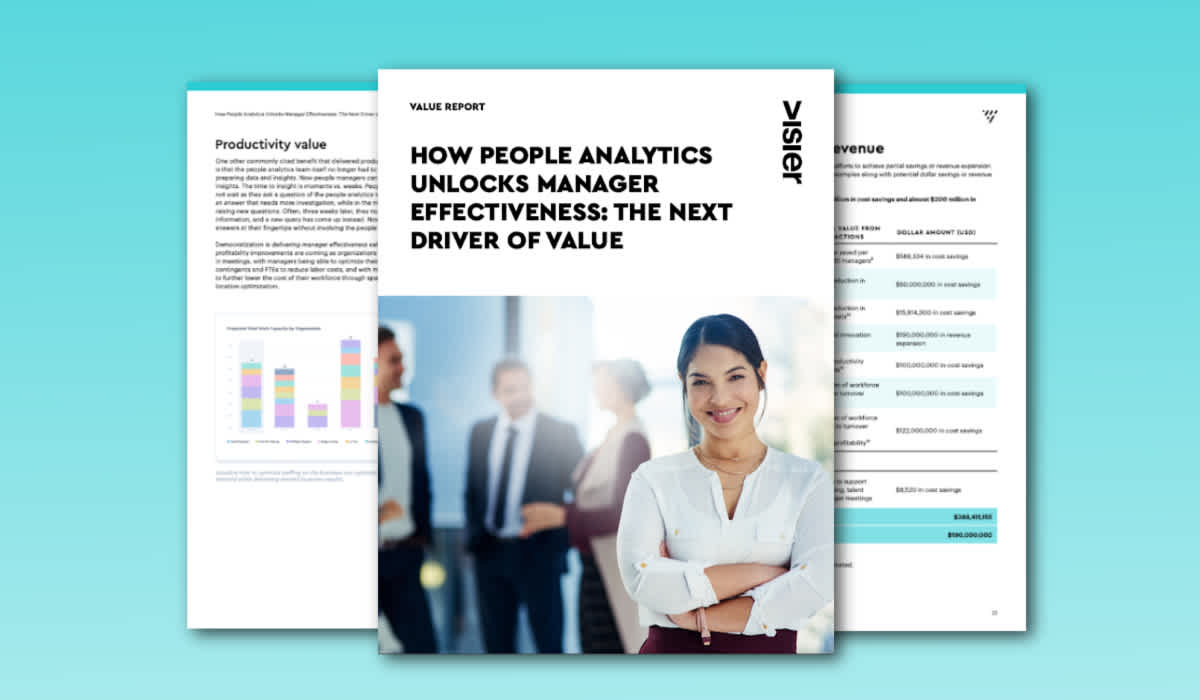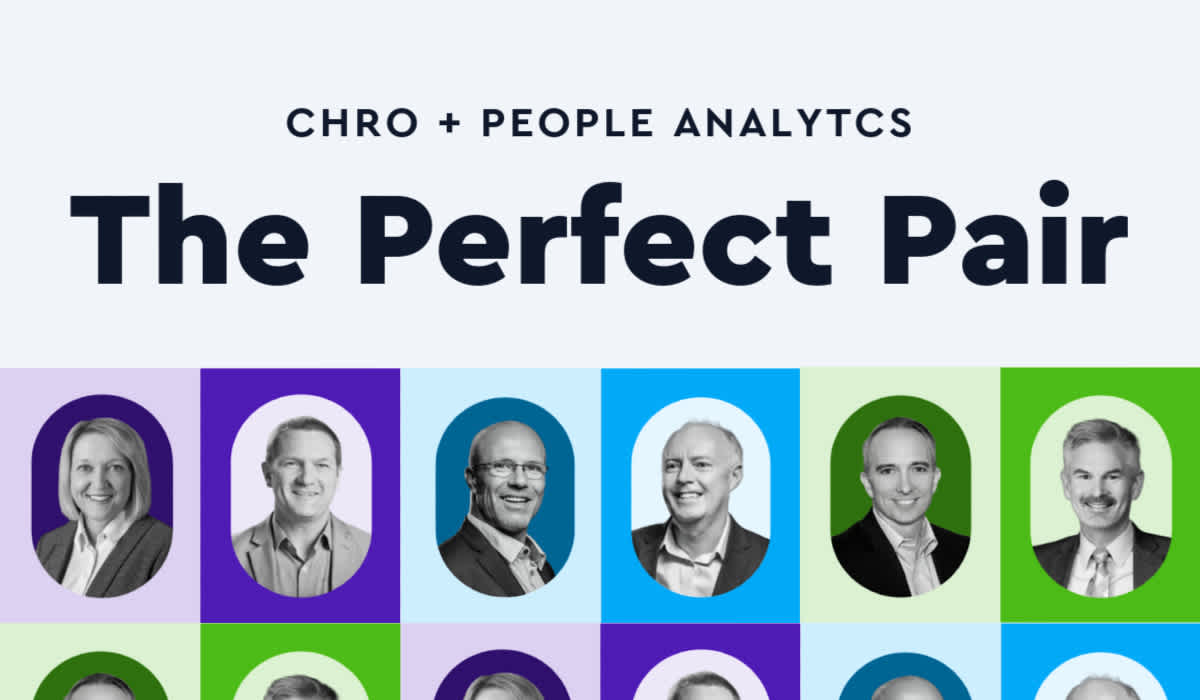6 Insider Tips for Unlocking Manager Effectiveness From the Experts
Standard Bank Group is leading the way in unlocking manager effectiveness measurement via customized people analytics. Read six takeaways from their journey.

When it comes to unlocking manager effectiveness, often half of the equation is absent. Savvy HR leaders know that enabling managers to make data-informed decisions is a powerful method to increase their effectiveness at leading people while also positively affecting the business. What is often missing from most manager effectiveness strategies, however, is measuring the results of those decisions—and then scaling the effective actions throughout the business.
In a fireside chat with Standard Bank Group’s Werner Merbold, Head of Workforce Insights and Ampie Swanepoel, Head of Workforce Insights Value Management, and Terry VanQuickenborne, Vice President of Research at the Josh Bersin Company (JBC), we explored the importance of measuring manager effectiveness and the impact it has on employee engagement, retention, and organizational success.
Leading the way in measuring manager effectiveness
Johannesburg-based Standard Bank Group is leading the way in unlocking manager effectiveness measurement via customized people analytics. The organization's journey towards democratizing people insights to over 9,000 managers across multiple countries in Africa included shifting from a service-based to a platform-based approach, ensuring leadership sponsorship, fostering cross-functional collaboration, defining clear metrics (what they call their “true north”), building a team of champions, and consistently measuring progress.
"We tried to move away from people-analytics-as-a-service to people-analytics-as-a-platform where anybody can go as a self-service, one-stop-shop, to get information," Merbold explains how the shift towards making data more accessible to managers enabled this user group to derive insights independently.
After putting people insights into the hands of people leaders, the next step was to determine what made an effective leader, assign metrics, incentivize managers, and then scale the successful actions across the organization. Below are six takeaways from that journey that other HR and people analytics leaders can learn from.

1. Effective managers drive innovation, agility, and retention
Managers play a pivotal role in the dynamics of employee engagement and retention—a big part of the impetus for fostering a culture of effective leadership. VanQuickenborne presented compelling statistics from her research into employee experience that found effective managers make organizations "seven times more likely to innovate" and "6.7 times more likely to be agile." These figures underscore the tangible benefits of measuring and understanding manager effectiveness. Additionally, she noted that effective management can make organizations "7.3 times more likely to engage and retain employees," highlighting the significant financial and cultural benefits of reducing turnover.
2. Measuring manager effectiveness isn’t just about the “what,” it’s about the “why”
When it comes to measuring manager effectiveness, knowing what to measure is only one part of the picture. Merbold comments that Standard Bank Group’s desire to track leadership effectiveness is “to guide our leaders to create ideal conditions for our people to thrive." He continues, “It's not about just measuring the individual. It's actually how do we create a workplace where the employees can thrive, contribute to the organization's success, and then measure those success factors and link them back to the manager.”

A glimpse into how Standard Bank Group keeps tabs on the effectiveness of their managers using Visier’s people analytics
3. Balance the business case with the human-centric aspect of leadership
Standard Bank undertook a journey to empower around 9,500 people leaders with access to crucial data for their teams. Today, about 6,500 line managers are now fully equipped to leverage people data directly. Key to this initiative was aligning people metrics closely with business strategy, focusing on value drivers like employee engagement, client focus, risk and conduct, and operational excellence to achieve desirable financial outcomes.
"These metrics form part of [senior leaders'] performance contracts as well as their remuneration plans," explains Swanepoel. "So it is critical for them to make sure that they deliver not only on the financial results of the organization but also the non-financial metrics."

By using Visier to leverage data to inform leadership practices and decisions, and then blending quantitative measures with a qualitative, human-centric approach to management across the organization, leaders at all levels gained a comprehensive understanding of their team's metrics at a glance and could delve deeper into specific areas as needed.

4. Access to insights means HRBPs can go from reactive to proactive when supporting managers
HR business partners play an important role in enabling manager effectiveness in that they often serve as a bridge between HR strategy and goals and the people leaders they support. However, "They are so overwhelmed with different requests for providing data, for providing trends or insights, that they lose focus on what the business is all about and where the business is going," says Merbold.
With access to people data to quickly access goal progress and people insights, HRBPs can shift from a reactive position—fielding questions, looking for answers—to a proactive one. As explained by Merbold, "It's now about taking that [historical data] and looking at some of the predictive analytics that we are also providing, anticipating some of those workforce trends" to get ahead of them.
5. Generative AI is poised to take manager effectiveness to the next level
With the inevitable reality of generative AI in HR, embracing people analytics will not be a choice between traditional methods and new technologies but a matter of integrating both to enhance decision-making processes. "It's not an either/or approach. It's a both," according to VanQuickenborne. She continues, "And really, the people analytics field is going to get more mature and people will come to understand that you don't have to be a data scientist to understand analytics." Analytics literacy, she says, is going to be a requirement to make data-driven decisions. AI tools like Visier's Vee remove the friction of knowing what to ask and how to interpret the analytic insights.
6. Start small, focus on essentials, don't wait for perfection
Merbold emphasized taking a strategic approach to implementing a data-driven management system that involved starting small, focusing on essential metrics (referred to as their "true north"), and building a culture that understands and utilizes data effectively. "We defined a couple of 'true north' metrics very early on in the process and although they changed during these three years since launching, there was a lot of consistency in them," he explains. "We knew exactly what we were going after."

He encourages other organizations to start small, define the main goals, and then get started with the data available at the time, even if it's a small set: "We started with a very small launch with the data that we had at that stage. If you wait for the perfect answer, it's almost impossible to get that right, because you will build up slowly over time."



